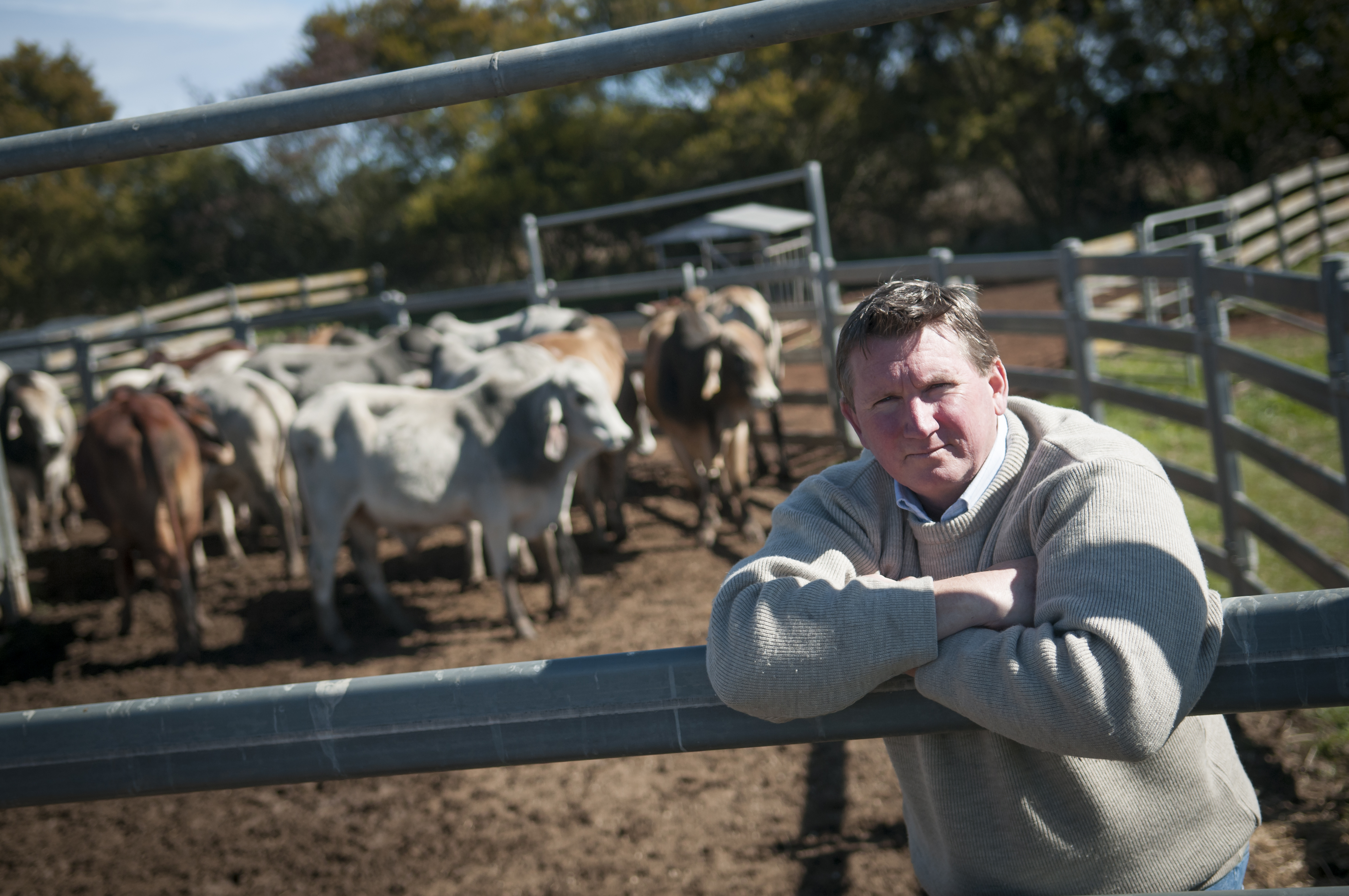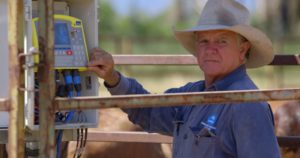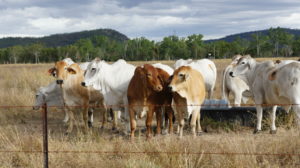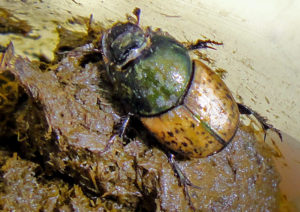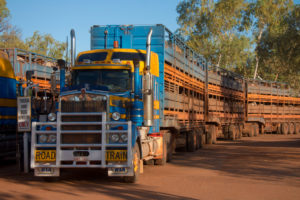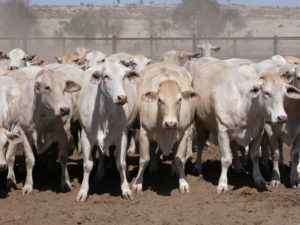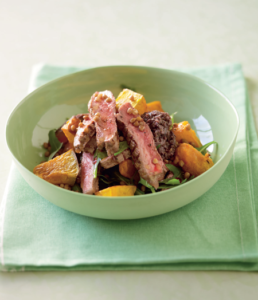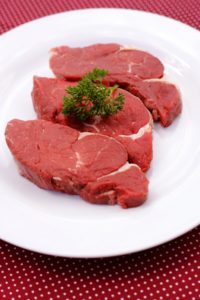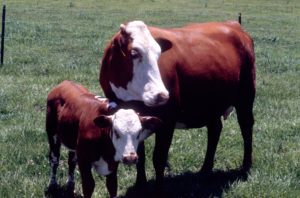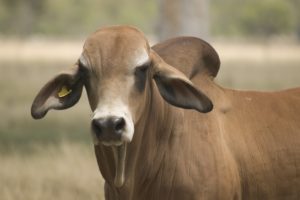Beef Week 2015 is a chance for our scientists to show off their expertise to the wider industry and the ‘steaks are high’. Image: Drewe Ferguson
Next week Australia’s beef industry gathers in Rockhampton for their triennial shindig, the industry’s biggest — Beef Australia 2015. Over 85 000 people involved in all aspects of the industry will be there. From farmers and truckers, to agribusiness CEOs and scientists, all will share their ideas on improving the industry, an industry valued at about $6b in exports and a similar amount in domestic consumption.
Being ideas people, our scientists will be among the crowd. They’ll be sharing what we’re working on, and laying out the opportunities for farmers and others. We’ll show how science can be used for a more productive, profitable and sustainable industry.
We’ve been helping the beef industry for as long as we’ve been around. Many of our advances go to show how innovative our farmers are, ready to take on new practices and technologies.
In one end, and out the other: dung beetles, cow burps, and gut microbes
Where to start? Perhaps at the end? Did you know we’re the one’s who brought in dung beetles to Australia to deal with, well, the dung? Indeed, and that’s why you’re sucking in air right now and not pesky bush flies.
At the other end we’re helping understand methane emissions from burping cattle, which along with sheep accounts for about 10% of Australia’s greenhouse gas emissions. Using some innovative techniques, including the use of lasers, we can measure the emissions from cattle in different environments and on different diets. We recently figured out the cattle in northern Australia on certain grasses emit about 30% less methane than previously estimated, so we’ve worded up the IPCC to correct the record on Australia’s emission estimates.
We’re also investigating end to end to understand the mechanisms involved with methane production, such as gut microbiota, and looking to the likes of Australia’s grass eating marsupials for ways to help reduce greenhouse gas emissions and improve conversion of feed to meat.
- With the rollout of the NBN to the bush expected in the next couple of years, technologies are being developed now that will assist producers in the management of their herd and property. New digital devices are being trialled on- farm as part of a project ‘Creating a digital homestead’. https://www.csiro.au/en/Research/AF/Areas/Sustainable-farming/Precision-management/Digital-Homestead
- The success and efficiency of Australia’s livestock industries are built upon the quality and performance of their animals, and genetics plays a role. CSIRO scientists developed the Australian Poll Gene Marker test, which is helping Australian cattle breeders select breeding animals that have no horns (animals with no horns are called polled). https://www.csiro.au/en/Research/AF/Areas/Animal-Science/Premium-livestock-breeds
- The average cow drops between 10 and 12 dung pads (also known as “pats”) every day and just one of those cow pads can produce up to 3,000 flies in a fortnight. With more than 28 million cattle in Australia, that’s a lot of dung and a lot more flies, which are a major nuisance for people and animals. Enter the dung beetle, cleaning our pastures, recycling nutrients and reducing nutrient run-off to our waterways. https://theconversation.com/french-beetles-flown-in-to-clean-up-australias-cattle-dung-30367
- The new TRANSIT tool developed by CSIRO is identifying ways to cut the costs of transporting cattle—offering solutions that would reduce the vast distances travelled and the numbers of trucks on the road. The tool will be applied beyond the livestock industry for use more broadly in the agricultural and logistics sectors. Image: Frans de Wit/Flickr CC BY-NC-ND (http://ow.ly/MmyIH ) https://blogs.csiro.au/ecos/modelling-a-more-efficient-future-for-cattle-transport/
- Animals in production environments face a range of challenges or ‘stress’ events including climatic extremes and disease challenges. Some animals seem to have a natural resilience for coping well with these events. As our research progresses and our understanding of cattle response to stress improves, our ability to select for highly resilient traits will result in healthier animals able to recover to high productivity levels. http://www.mla.com.au/Livestock-production/Feeding-finishing-and-nutrition/Lotfeeding-and-intensive-finishing/Heat-stress
Bovine 2.0: breeding for the wide brown land
Early in our days it was recognised that the predominant European Bos taurus cattle breeds weren’t really suited to conditions in northern Australia. Heat, ticks and other parasites took their toll. We crossbred the Bos taurus cattle with Bos indicus cattle, from Texas, to produce some improvements in tolerance to the tough conditions. Though many weren’t impressed with us “mongrelising” their European breeds, their minds were changed when our new crossbreeds survived the 1930 drought. Overall, out breeding programs have brought in an estimated $8 billion to the industry.
We teamed up with international partners in the early 2000s to sequence the bovine genome. This genetic research has gone into both BREEDPLAN, Australia’s National Beef Genetic Evaluation Scheme, and GeneSTAR, a test for a range of genetic markers associated with meat quality and desired production traits.
Don’t hurt a cow, man: cow welfare
We identified a genetic marker for ‘hornlessness’. Horns are a big problem for industry. Horns hurt handlers and other cattle and removing them is hard on both animals and farmers. A poll gene test is now helping farmers select cattle that are much more likely to breed hornless offspring providing both production and welfare benefits.
We also continue to help the industry meet high standards of animal welfare by providing objective assessments of new pain relief options and mitigating the impact of long distance transport both on land and at sea.
McDaisy: taste and tenderness assessments
Of course all of this great performing cattle isn’t much good if it doesn’t taste good so researchers, including our scientists, worked with Meat & Livestock Australia to develop Meat Standards Australia – an objective assessment of meat for eating quality that takes the guess work out of choosing a great cut of meat, be it at the supermarket or restaurant.
Speaking of delicious, we’ve investigated ways of using High Pressure Processing to tenderise otherwise low-value cuts that also provides three times the normal shelf-life. This continues a long tradition of post-farm gate research for the cattle industry. We previously worked on refrigerated and frozen meats for long distance shipping, opening and expanding many export markets.
- Beef salad, yummy, yummy. As Australia’s primary producers enjoy a week in Rockhampton celebrating all things beef, we would like to share this delicious pumpkin, lentil, rocket and beef salad from our Total Wellbeing Diet. Image: Penguin Australia http://www.penguin.com.au/products/9781742536538/csiro-total-wellbeing-diet-fast-fresh-recipes/309763/pumpkin-lentil-rocket-and-beef-salad
- High-pressure processing (HPP) is now an established processing technology in the food industry for the shelf-life extension of many products, including fruit juices, sauces, guacamole and dips, meal kits, seafood in their shells, and ready-to-eat meat products. Image: iStock https://www.csiro.au/en/Research/FNF/Areas/Food-innovation-centre/Our-expertise/Meat-and-seafood
- We work with livestock farmers and industry to address key issues affecting the beef industry with the aim of improving productivity, profitability and sustainability through better livestock breeds and management practices. https://www.csiro.au/en/Research/AF/Areas/Animal-Science
- Our research to improve the health and welfare of livestock in modern production systems benefits productivity and maintains consumer and market confidence of Australian livestock products. Working in collaboration with Queensland Alliance for Agricultural and Food Innovation (QAAFI), we are looking at new tools that make delivery of a local anaesthetic safe and easy for farmers, followed by a practical method of applying follow-on pain relief that doesn’t require injections. https://www.csiro.au/en/Research/AF/Areas/Animal-Science/Animal-Health-Welfare
Mad cow, sane science: defence against microbes
Along with our research into cold storage, our food safety scientists are using an enhanced understanding of food borne bacteria such as E. coli to ensure continued access to export markets such as the US without elaborate import testing regimes.
Meanwhile, north of Australia we’re helping keep serious biosecurity threats like foot and mouth disease at bay by working with South-East Asian countries to improve their surveillance and response to diseases that could damage our cattle industry and greatly hinder market access. Similarly, in Australia, we’re helping industry and government prepare for the next disease incursion.
As you can see, there is plenty of great Aussie ingenuity that goes into creating some of the most sustainable and salivatory beef in the world. So next time you’re chewing over a beef burger, take some time to ruminate on the contributions we’ve made to the beef industry in the last 90 years.

